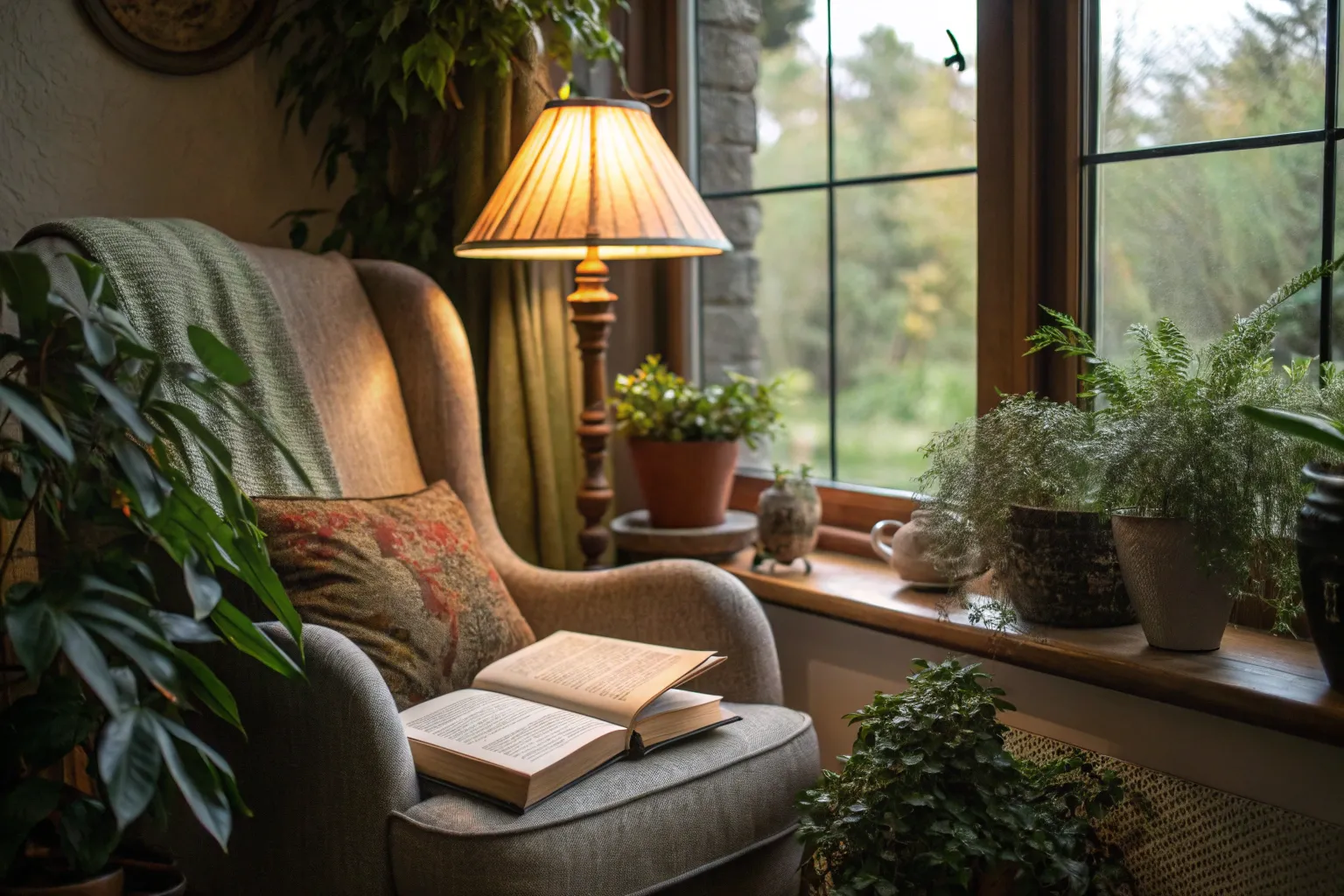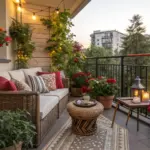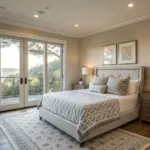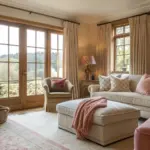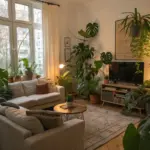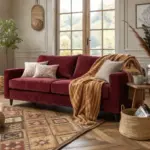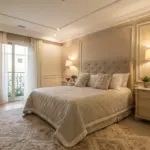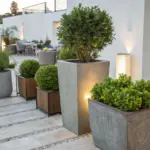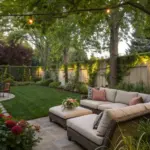A well-designed reading nook transforms an overlooked corner into the most cherished retreat in your home—a place where time slows, distractions fade, and you can fully immerse yourself in the worlds contained within your favorite books. The secret to creating one you’ll truly use lies not in following trends, but in understanding the fundamental design principles that make a space both functionally sound and deeply inviting.
Selecting the Perfect Location
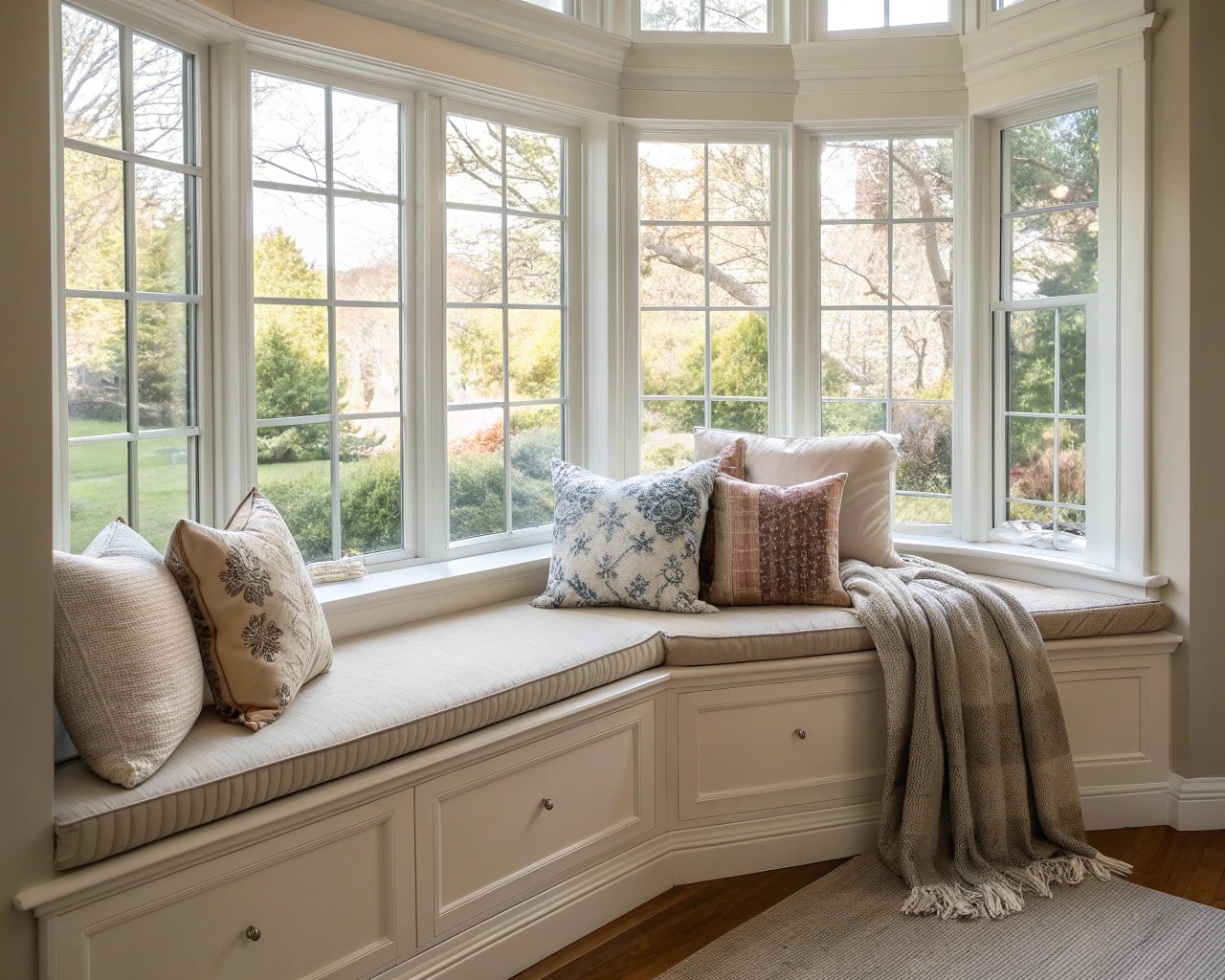
The placement of your reading nook significantly impacts how often you’ll actually use it. I’ve found that the most successful reading spaces share certain spatial characteristics that aren’t immediately obvious but make all the difference.
Natural Light Considerations
Windows provide the ideal light source for daytime reading, reducing eye strain while connecting you to the natural rhythm of the day. Position your seating perpendicular or adjacent to windows rather than directly facing them to avoid glare on book pages. North-facing windows offer consistent, diffused light throughout the day, while east-facing locations provide gentle morning illumination—perfect if you’re an early reader.
Bay windows create naturally recessed alcoves that feel protected and cozy. The architectural depth offers built-in definition for your reading space without requiring additional room dividers. If you’re designing a bay window nook, the standard depth of 38-40 inches accommodates comfortable seating while maximizing the view.
Quiet Zone Mapping
Acoustic peace matters as much as visual comfort. Map the sound patterns in your home throughout the day before committing to a location. Areas away from high-traffic zones like kitchens or main hallways naturally offer more tranquility. Consider spaces adjacent to external walls, which provide an additional sound buffer from household activity.
In my experience working with open floor plans, corners create psychological separation even without physical barriers. The two walls provide a sense of enclosure that helps your mind shift into a more relaxed, focused state.
Spatial Requirements
A functional reading nook requires surprisingly little square footage—you can create one in as small as 36 inches wide by 40 inches deep. However, the space should allow you to reposition yourself comfortably during extended reading sessions. Cramped quarters that force a single rigid posture will discourage use, regardless of how beautifully styled.
The Foundation: Seating That Supports
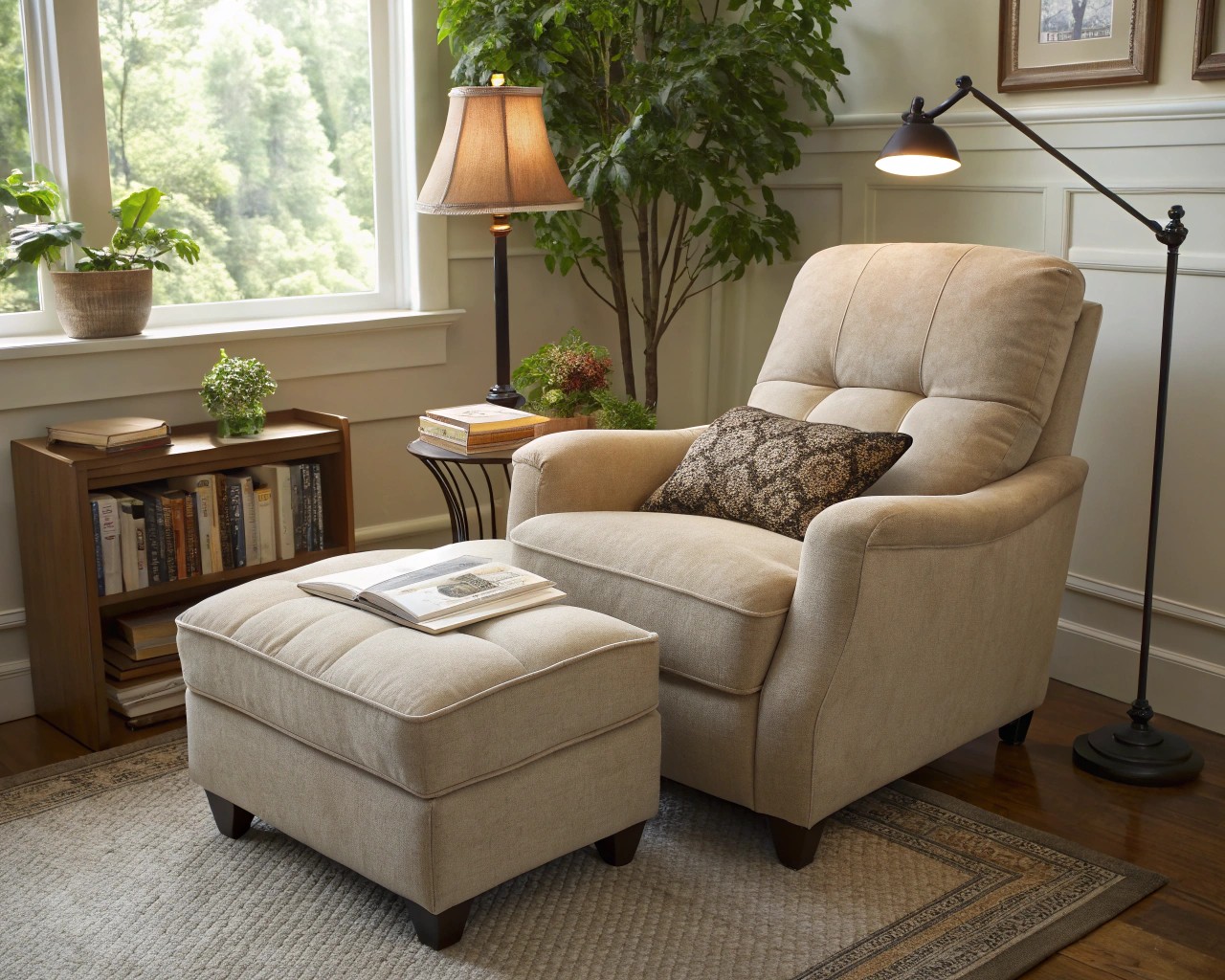
The chair you choose determines whether your reading nook becomes a daily sanctuary or an underused decoration. Ergonomic support isn’t about rigidity—it’s about maintaining your body’s natural alignment so you can read for hours without discomfort.
Ergonomic Principles
Look for seating that supports the natural S-curve of your spine, particularly in the lumbar region. High-density memory foam contours to your body while maintaining sufficient firmness to prevent slouching. The seat depth should allow you to sit back fully with 2-3 inches of clearance behind your knees—too deep and you’ll lose lumbar support, too shallow and circulation becomes restricted.
Armrests provide crucial support when holding books or e-readers for extended periods. The ideal height allows your shoulders to relax naturally with your elbows bent at roughly 90 degrees.
Seating Options by Space
| Seating Type | Best For | Considerations |
|---|---|---|
| Wingback Chair | Medium to large spaces | High back and side wings create cocoon effect; excellent lumbar support |
| Built-in Window Seat | Bay windows, alcoves | Maximizes architectural features; add 4-6 inches of cushioning |
| Floor Cushions/Poufs | Compact corners, casual spaces | Flexible placement; best for shorter reading sessions |
| Reclining Chair | Bedrooms, private spaces | Adjustable positions; ideal for mixed activities |
| Daybed | Larger nooks, multipurpose areas | Twin-bed dimensions (75″ x 38″); functions as seating and occasional sleeping |
Supporting Elements
Don’t overlook the importance of a footrest or ottoman. Elevating your feet reduces lower back pressure and improves circulation during long reading sessions. Position it 12-18 inches from your chair to allow natural leg extension without straining.
For built-in seating, I recommend incorporating storage beneath the cushions. This transforms dead space into practical book storage while maintaining clean lines. Use gas-lift hinges for easy access—you don’t want to wrestle with your seat every time you need to retrieve a book.
Lighting Layers for Every Hour

Proper illumination makes the difference between comfortable reading and eye strain. The key is creating multiple lighting layers that adapt to different times of day and reading conditions.
Understanding Color Temperature
Color temperature, measured in Kelvin (K), profoundly affects both your visual comfort and your body’s natural rhythms. Warm white light in the 2700K-3000K range reduces eye strain and creates a cozy atmosphere ideal for evening reading. This temperature mimics the warm glow of incandescent bulbs and candlelight, signaling to your brain that it’s time to relax.
For daytime reading or study-focused sessions, you might prefer slightly cooler temperatures around 3500K-4000K, which enhance alertness without the harshness of daylight-spectrum bulbs. However, avoid cool white bulbs above 4000K in your reading nook—they create a clinical feel that works against the cozy atmosphere you’re building.
Task Lighting Positioning
Position your reading lamp 15-20 inches to the side and slightly behind your shoulder to minimize shadows and glare on the page. The light should illuminate your reading material without creating reflection that forces you to adjust your position. Floor lamps with adjustable arms offer excellent flexibility, allowing you to direct light precisely where needed.
For built-in nooks, consider wall-mounted swing-arm lamps that save precious surface space while providing targeted illumination. Mount them 40-48 inches above the seat cushion for optimal reading height.
Layered Lighting Strategy
- Ambient lighting: Soft overhead or nearby sources that provide general illumination without harsh shadows
- Task lighting: Directional reading lamp with 400-600 lumens for focused illumination
- Accent lighting: LED strips under shelving or behind plants create gentle background glow
- Natural light: Primary daytime source; supplement rather than replace artificial options
Install dimmer switches on all artificial light sources. The ability to adjust brightness throughout the day prevents the need to switch between different fixtures and allows you to fine-tune the ambiance for different books—a suspenseful thriller might call for slightly brighter light than contemplative poetry.
Textile Choices That Embrace You

The fabrics you select create the tactile experience of your reading nook. These aren’t purely aesthetic decisions—different textile properties affect comfort, maintenance, and how inviting the space feels.
Performance Fabric Comparison
| Fabric | Feel | Durability | Maintenance | Best Application |
|---|---|---|---|---|
| Linen | Cool, textured, softens with age | Very strong, resists pilling | Wrinkles easily, absorbs stains quickly | Warm climates, casual aesthetic |
| Velvet | Plush, soft, luxurious | Durable (especially polyester blends) | Attracts dust, requires regular vacuuming | Cozy atmosphere, cooler months |
| Wool | Warm, slightly textured | Extremely durable, natural resilience | Naturally stain-resistant, professional cleaning recommended | Year-round comfort, traditional style |
| Microfiber | Soft, suede-like | Highly durable, colorfast | Easy to clean, beads liquids | High-use areas, households with pets |
| Bouclé | Nubby, textured, cozy | Good with quality blends | Can snag, requires gentle care | Modern aesthetic, visual interest |
Layering Textiles
The Danish concept of hygge—which translates loosely as “cozy contentment”—offers valuable insights for textile selection. Research shows that layering different textures creates psychological comfort by engaging multiple senses simultaneously.
Start with your seating upholstery as the foundation, then add:
- Throw pillows: 2-3 pillows in complementary textures provide lumbar support and visual softness
- Throw blankets: Wool, chenille, or fleece options offer warmth and the psychological comfort of being “nestled”
- Area rug: Defines the space while adding warmth underfoot; jute, wool, or shag styles work well
I’ve observed that reading nooks with at least three different textile textures feel more inviting than those dominated by a single material. The variation creates visual and tactile interest without feeling cluttered.
Lumbar Support Essentials
Even the most comfortable chair benefits from additional lumbar support. Memory foam cushions designed with ergonomic contours help maintain the spine’s natural curve during extended reading. Position the support pillow in the lower back curve just above your pelvis—it should create a gentle arch that feels supportive rather than forcing you forward.
For side-reading positions, a firm bolster placed between your shoulder and neck reduces strain. These specialized pillows prevent the head-tilting that often causes neck pain during prolonged reading sessions.
Storage Solutions That Serve
Thoughtful storage keeps your favorite books within reach while maintaining the uncluttered atmosphere essential to relaxation. The goal is accessibility without visual chaos.
Integrated Shelving Approaches
Built-in shelving surrounding your reading nook creates an immersive, library-like experience. Floor-to-ceiling units maximize vertical space—particularly valuable in rooms with high ceilings—while keeping the floor area open. I typically recommend shelving depths of 10-12 inches for standard books, with occasional 14-inch deep sections for oversized volumes or decorative objects.
For bay window seats or alcoves, flank the seating area with matching bookcases. This symmetrical arrangement creates visual balance while ensuring you’re literally surrounded by your collection.
Organizational Strategies
The method you use to organize books affects both aesthetics and functionality:
- By genre: Facilitates mood-based selection; group fiction, non-fiction, poetry, etc.
- By author: Intuitive for those who read multiple works by favorite writers
- By color: Creates striking visual impact but may complicate finding specific titles
- By size: Maximizes shelf efficiency and creates clean lines
- By reading status: Separate “to read,” “currently reading,” and “completed” for active readers
Place books you reference frequently at eye level (approximately 48-60 inches from the floor). This “prime real estate” should house current reads and perennial favorites. Store seasonal selections, reference books, or decorative volumes on higher shelves.
Small-Space Solutions
Not every reading nook can accommodate extensive shelving. Alternative storage includes:
- Floating shelves: Mount 8-10 inches above seating for easy reach without consuming floor space
- Woven baskets: Store reading materials beneath benches or beside chairs; natural fibers complement cozy aesthetics
- Side tables with shelving: Dual-purpose furniture that holds lighting, beverages, and several books
- Vertical magazine racks: Wall-mounted options display current reads while saving surface area
Biophilic Elements for Well-Being
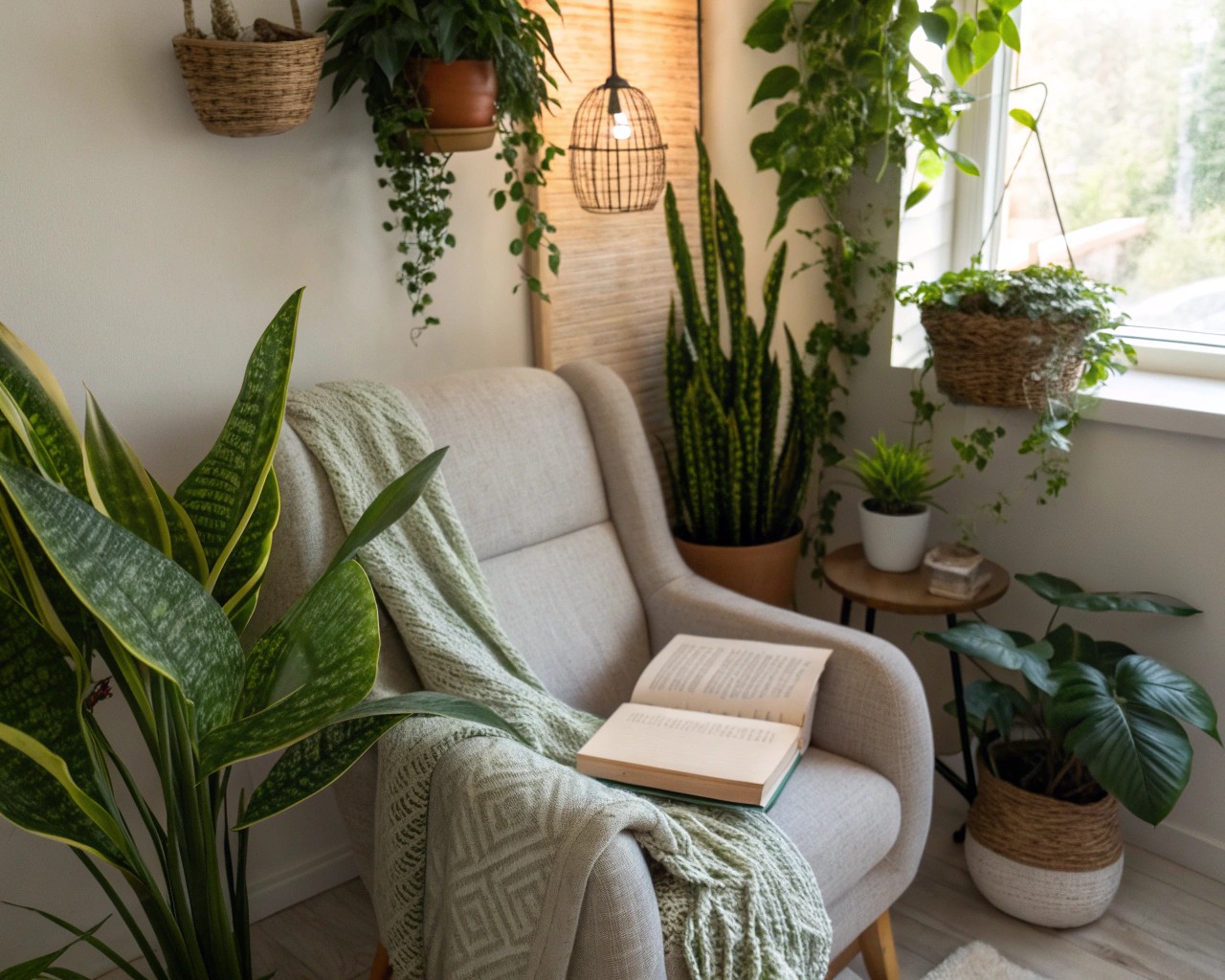
Incorporating living plants into your reading nook isn’t just decorative—it actively improves air quality and psychological well-being. The principle of biophilic design recognizes humans’ innate connection to nature and leverages it for healthier indoor environments.
Air-Purifying Plant Selection
NASA’s landmark Clean Air Study identified specific plants that filter harmful chemicals like formaldehyde, benzene, and trichloroethylene from indoor air. For reading nooks, consider these low-maintenance options:
- Snake Plant: Releases oxygen at night; thrives in low light; removes toxins including formaldehyde and benzene
- Pothos: Excellent in dim conditions; effective air purifier; tolerates irregular watering
- Spider Plant: Non-toxic to pets; removes carbon monoxide and xylene; produces oxygen
- Peace Lily: Filters multiple toxins; flowers in moderate light; indicates water needs by drooping
- Aloe: Requires minimal care; monitors air quality (brown spots indicate excessive harmful chemicals)
Placement Considerations
Position plants where they receive appropriate light without blocking your reading illumination. Hanging plants or wall-mounted planters work beautifully in compact nooks where floor space is limited. For windowside reading spots, place larger plants (like Monstera or Fiddle Leaf Fig) on the opposite side to balance the window’s visual weight.
Research indicates that the presence of plants reduces stress, lowers blood pressure, and improves concentration—all beneficial for extended reading sessions. Even a single well-placed plant can transform the atmosphere of your nook from merely comfortable to genuinely restorative.
Window Treatments for Light Control
Managing natural light prevents glare while maintaining the connection to the outdoors that makes windowed reading nooks so appealing. The solution lies in layering window treatments for flexibility throughout the day.
Treatment Options Compared
| Treatment Type | Light Control | Privacy | Best Use Case |
|---|---|---|---|
| Sheer Curtains | Filters 40-60% of light | Daytime only | Bright spaces needing softened light |
| Blackout Curtains | Blocks 95-100% of light | Complete privacy | Spaces with excessive sun or for night readers |
| Room Darkening | Reduces 70-80% of light | High privacy | Balanced control without complete darkness |
| Roman Shades | Adjustable from full open to closed | Variable by position | Bay windows, traditional aesthetics |
Layering Strategy
The most versatile approach combines sheer and blackout curtains on a double rod system. During daytime reading, draw the sheers to diffuse harsh sunlight while maintaining a bright, airy atmosphere. For evening sessions or afternoon naps, close the blackout panels for complete darkness.
For reading nooks where maintaining the view is paramount, install blackout cellular shades that roll down from the top. This allows you to block overhead sun glare while keeping the lower portion of the window clear.
Fabric and Color Selection
Light-colored curtains in warm whites, creams, or soft grays reflect sunlight and make small nooks feel more spacious. Darker blackout curtains create dramatic contrast and reinforce the cocooning effect during evening reading sessions. Ensure blackout fabrics have thermal properties—they’ll insulate the space against temperature fluctuations that can interrupt reading comfort.
Acoustic Considerations for Peaceful Reading
Sound management rarely receives attention in reading nook design, yet acoustic comfort significantly affects your ability to concentrate and relax. Addressing noise creates the peaceful environment essential for immersive reading.
Sound-Absorbing Materials
Hard surfaces reflect sound, creating echo and amplifying household noise. Soft, porous materials absorb sound waves, dampening ambient noise and creating quieter conditions. In your reading nook, incorporate:
- Upholstered furniture: Thick cushions and padded arms absorb more sound than hard wooden furniture
- Heavy curtains: Velvet, wool, or multi-layer curtains provide significant sound dampening
- Area rugs: Dense pile or thick padding underneath absorbs footstep noise and general sound
- Acoustic wall panels: Fabric-wrapped panels mounted on walls adjacent to noisy areas reduce sound transmission
Textiles serve double duty in reading nooks—they create visual warmth while simultaneously improving acoustic conditions. The layered approach to comfort naturally addresses sound concerns without requiring specialized acoustic treatments.
Strategic Positioning
If possible, position your reading nook on an external wall rather than one shared with active household areas. External walls provide a natural sound buffer. For nooks in open floor plans, use tall bookshelves filled with books as sound barriers. The varied surfaces and dense mass of book collections effectively absorb and deflect sound.
White noise machines or fountains can mask intermittent household sounds without requiring significant acoustic investment. The gentle, consistent sound helps your brain filter out irregular noises that might otherwise break concentration.
Scale and Proportion Principles
Understanding scale and proportion prevents the common mistake of furnishing a reading nook with undersized pieces that make the space feel cramped rather than cozy. Counterintuitively, appropriately scaled furniture often means going larger than your instinct suggests.
The Bigger-Is-Better Principle
In small spaces, fewer larger pieces create a more spacious feel than many small items. A substantial armchair anchors your reading nook and provides the visual weight needed to make the space feel intentional. Small-scale furniture in a compact area paradoxically makes the room feel smaller by emphasizing the limited dimensions.
When selecting seating, don’t automatically choose a loveseat over a full sofa for a small nook. The larger piece often works better because it:
- Creates a clear focal point rather than looking tentative
- Provides more comfortable proportions for actual use
- Anchors the space with appropriate visual weight
Proportion Guidelines
Furniture should occupy no more than 60% of your nook’s floor space, leaving room for circulation and preventing a cluttered feeling. For built-in window seats, the ideal depth is 18-24 inches for perching and 30-40 inches if you want to fully recline.
Side tables should reach approximately the same height as your chair’s armrest—typically 24-27 inches tall. This proportion feels natural and prevents awkward reaching for books, beverages, or lighting controls.
Visual Balance
Balance large seating pieces with substantial lighting. A standard table lamp looks out of proportion next to a deep armchair—instead, choose floor lamps with presence or oversized table lamps that complement rather than shrink beside your seating. The lampshade bottom should align roughly with eye level when you’re seated, typically 40-42 inches from the floor.
If your nook includes bookshelves, balance their vertical emphasis with horizontal elements. A low bench or wide rug grounds the space and prevents the bookcases from feeling top-heavy.
Creating Your Personal Retreat
Quick Implementation Checklist
To help you get started, here’s a prioritized action plan:
Phase 1: Location and Seating (Week 1)
– Map quiet zones in your home during different times of day
– Measure potential nook locations (minimum 36″ x 40″)
– Select seating with proper lumbar support and appropriate scale
– Test seating position relative to natural light sources
Phase 2: Lighting and Textiles (Week 2)
– Install task lighting with warm bulbs (2700K-3000K)
– Add dimmer switches for adjustable ambiance
– Layer textiles: cushions, throw blankets, area rug
– Select window treatments appropriate for light control needs
Phase 3: Refinement (Week 3-4)
– Arrange storage for books within arm’s reach
– Add 1-2 air-purifying plants
– Install acoustic treatments if needed
– Adjust elements based on actual use
Essential Elements Summary
| Element | Purpose | Key Specification |
|---|---|---|
| Seating | Ergonomic support for extended reading | Lumbar support, 18-24″ seat depth |
| Task Light | Targeted illumination without glare | 400-600 lumens, 2700K-3000K |
| Textiles | Comfort, warmth, acoustic dampening | 3+ different textures layered |
| Storage | Accessible book organization | Within arm’s reach, multiple formats |
| Plants | Air quality, psychological comfort | Low-maintenance, appropriate light needs |
| Rug | Space definition, warmth, sound absorption | Extends 12-18″ beyond seating footprint |
The reading nooks that become true sanctuaries share a common quality: they’re designed around how you actually read, not how reading spaces look in magazines. Pay attention to your natural reading habits—do you prefer to sit upright or curl up? Do you read mostly during daylight or evening hours? Do you need complete silence or gentle background sounds?
Use these observations to guide your decisions. A reading nook tailored to your specific needs will naturally become the place you never want to leave—not because it follows design rules, but because it understands and supports the simple pleasure of losing yourself in a good book.
Key Takeaway: The most successful reading nooks balance practical ergonomics with sensory comfort, creating spaces that support both your body and your mind during the immersive experience of reading.

